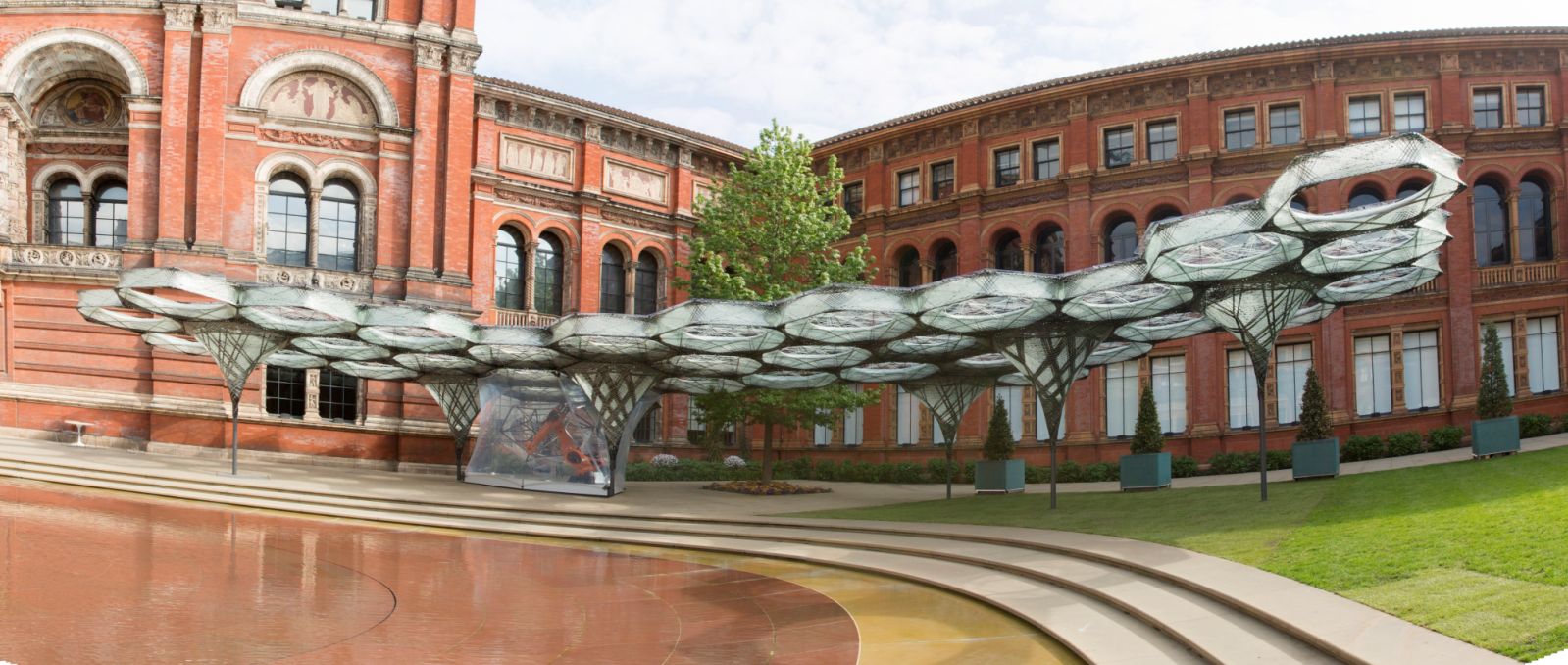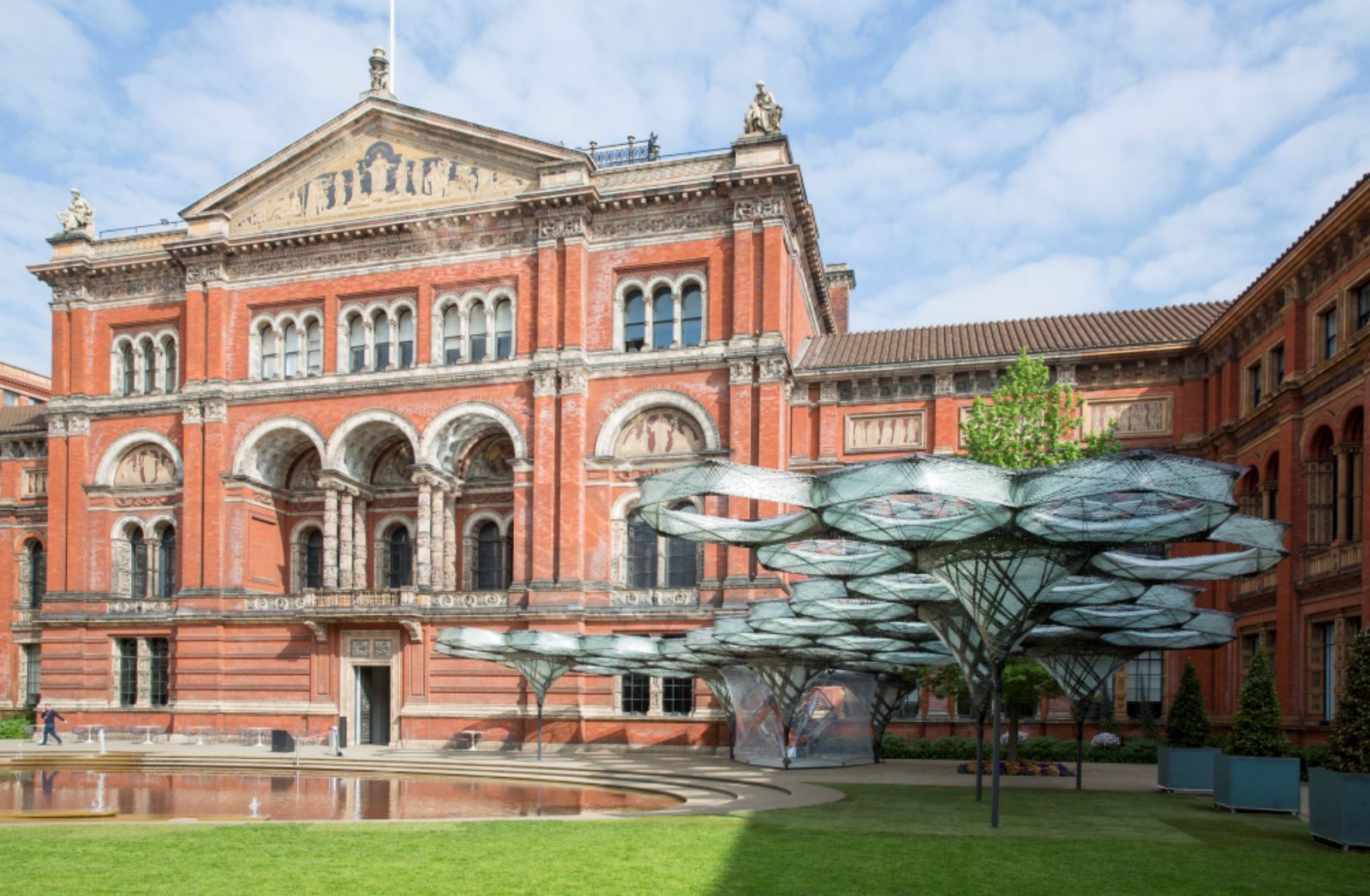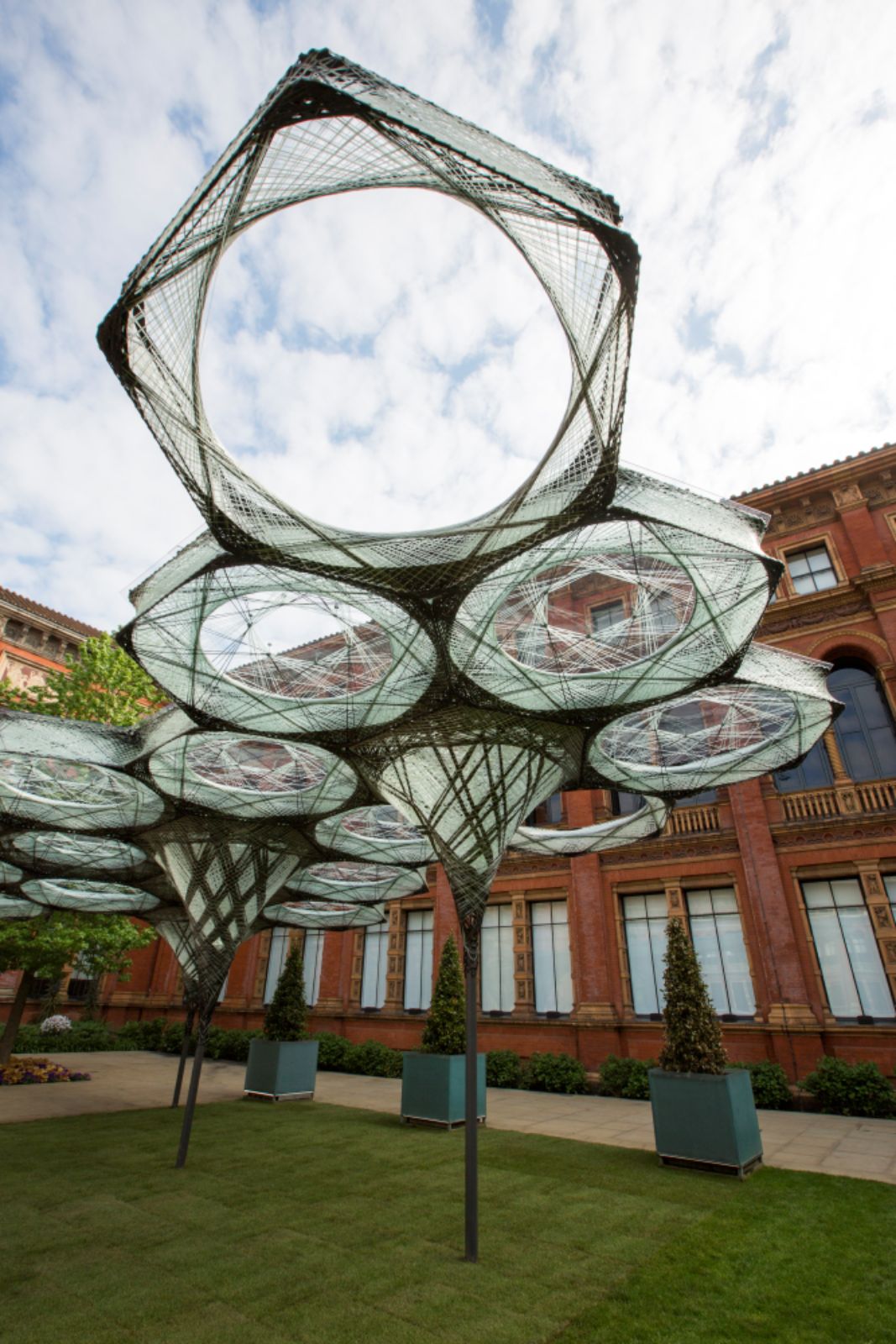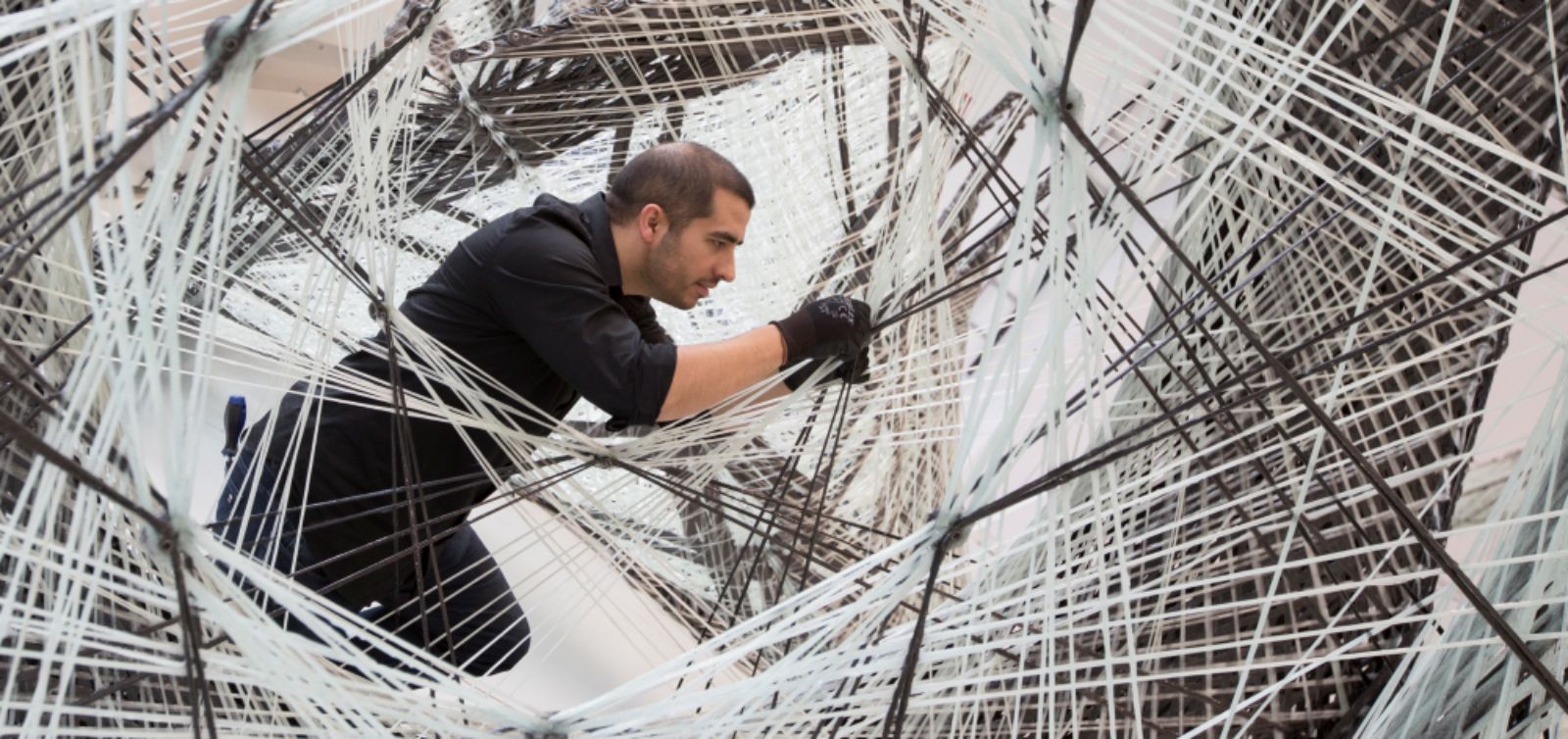
The V&A marks the start of its Engineering Season with the unveiling of the new installation, Elytra Filament Pavilion. The pavilion is the outcome of four years of ground-breaking research on the integration of architecture, engineering and biomimicry principles. The project explores how biological fibre systems can be transferred to architecture.

The 200m² pavilion structure is inspired by lightweight construction principles found in nature – the fibrous structures of the forewing shells of flying beetles known as elytra. Elytra’s components have been fabricated by a robot at the University of Stuttgart and assembled on site in the V&A’s John Madejski Garden.
The pavilion will grow and change its configuration over the course of the V&A Engineering Season in response to anonymous data on how visitors use and move under the canopy. This, as well as structural data, will be captured by real-time sensors installed in its canopy fibres. On 17 and 18 June and 22 September, visitors will be able to see the pavilion evolve as new components are fabricated live in the garden by a Kuka robot.

In what is their first public commission in the UK, experimental architect Achim Menges with Moritz Dörstelmann structural engineer Jan Knippers and climate engineer Thomas Auer have pioneered a unique robotic fabrication technique developed by the University of Stuttgart’s Institute of Computational Design (ICD) and Institute of Building Structures and Structural Design (ITKE). This technique, developed by the team over several years of prior research, involves a novel way of winding composite materials by a robot arm.

This innovative winding method has been designed to harness the material properties of carbon fibres to give them strength as woven structural components. A series of these individual cell-like modules have been used to create the pavilion’s distinctive shape. This production method integrates the processes of design, engineering and making and explores the impact of emerging computational and robotic technologies on these disciplines. Elytra’s canopy is made up of 40 hexagonal component cells. On average they weigh 45kg each and take an average of three hours to make.

These cells and the pavilion’s seven supporting columns were created by a computer-programmed Kuka robot in a four-month construction process at the ICD’s Fabrication Hall in Stuttgart. To make each component, the robot wound resin-soaked glass and carbon fibres onto a hexagonal scaffold, before hardening. Each cell and column is individual. Its final form of densely-knit fibres is a direct result of the changing stress conditions determined through structural simulation and testing carried out in advance by the ITKE.

This enables an exceptionally lightweight structure that weighs less than 9kg per m2, which equals 2.5 tonnes for the entire pavilion. Achim Menges said: “With Elytra Filament Pavilion we aim to celebrate a truly contemporary and integrative approach to design, engineering and production, resulting in a distinctive spatial and aesthetic experience. Based on the biological structure of beetles’ hardened forewings, we have created a novel architectural system that covers parts of the John Madejski Garden with an intricate, extremely lightweight structure made entirely from glass and carbon fibres.

The canopy grows from an onsite robotic fabrication unit in response to real-time sensing data, showcasing the profound impact of emerging technologies and related new alliances between the fields of design, engineering and natural science. Through this we seek to provide visitors with a unique experience of the garden that offers a glimpse of novel architectural and engineering possibilities, which may transform our built environment in the future.”

Elytra Filament Pavilion is one of the highlights of the V&A’s first ever Engineering Season, which is curated by Maria Nicanor and Zofia Trafas White of the Museum’s Design, Architecture and Digital department. The season is complemented by the exhibition Engineering the World: Ove Arup and the Philosophy of Total Design, which opens on 18 June, as well as a series of other displays, events and digital initiatives dedicated to global engineering design.

The V&A Engineering Season highlights the importance of engineering in our daily lives and consider engineers as the ‘unsung heroes’ of design, who play a vital and creative role in the creation of our built environment. Commissioned by the V&A, it will be on display in the John Madejski Garden from 18 May – 6 November 2016. Admission is free.The V&A’s Engineering Season is on view until 6 November. ‘Engineering the World: Ove Arup and the Philosophy of Total Design’ opens 18 June. Source and photo Courtesy of Victoria and Albert Museum, London.






